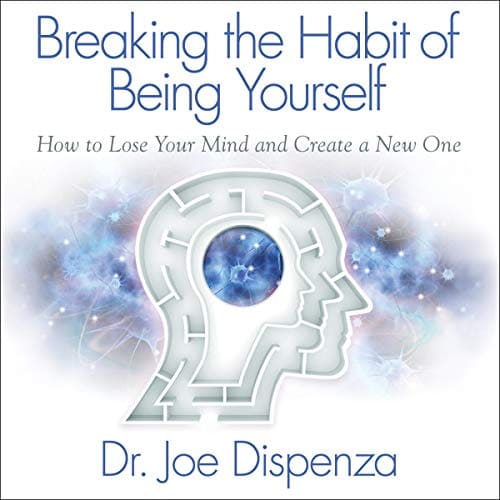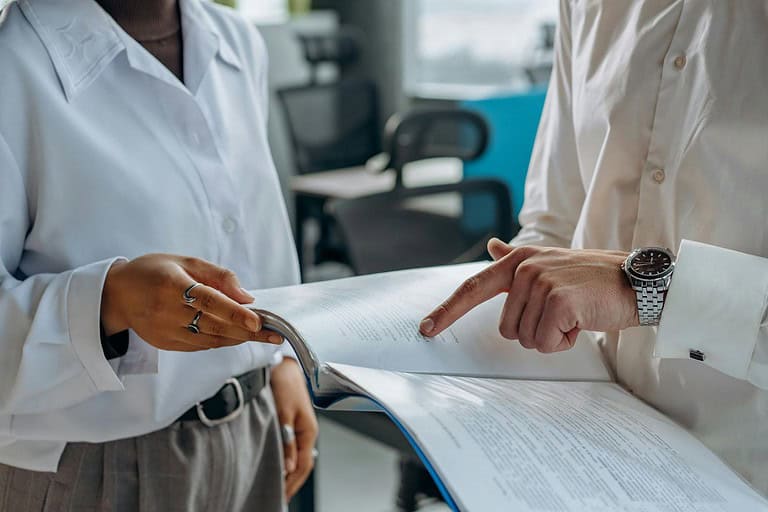Breaking the Habit of Being Yourself by Dr. Joe Dispenza | Summary
In Breaking the Habit of Being Yourself, Dr. Joe Dispenza discusses removing negativity and using meditation to positively change your life.
Are you ready to unlock your fullest potential and become a better version of yourself? In Breaking the Habit of Being Yourself: How to Lose Your Mind and Create a New One, Dr. Joe Dispenza invites readers on an inspiring journey that will challenge them to change their perception of reality and create better circumstances for themselves.
For business owners and professionals looking for something more than self-help advice, this is one of the best habit books and self-help books, that summarizes scientific insights based on neuroscience and quantum physics that explain why certain habits are challenging to break.
Buy Breaking the Habit of Being Yourself on Amazon

Breaking the Habit of Being Yourself by Dr. Joe Dispenza
How to Lose Your Mind and Create a New One
In his book, Dr. Dispenza outlines how we can reprogram our thoughts and behaviors to reach success, abundance, and happiness in life. Through easy-to-follow steps, he helps readers learn how they can meditate and break out of their mental prisons while also unlocking greater clarity into their authentic selves as individuals.
Download the PDF Book Summary for Breaking the Habit of Being Yourself
Part I: The Science of You
In Part I of Breaking the Habit of Being Yourself, Joe Dispenza combines philosophical and scientific paradigms from the latest research about the nature of reality, who you are, why internal change is challenging for many, and what your potential could be.
Chapter 1: The Quantum You
In Chapter 1 of Breaking the Habit of Being Yourself, Joe Dispenza introduces some quantum physics:
- Your subjective mind and thoughts create your objective reality. In essence, the brain creates material reality.
- The science behind Quantum Physics tells us that an atom is 99.99999 percent energy and .00001 percent physical matter; however, most of us focus on the very tiny physical world.
- Direct the Observer Effect so, “where you direct your attention [emotions and clear objectives] is where you place your energy.” Thus, consequentially, you affect matter or the material world, which primarily consists of energy.
- “So if we want to change some aspect of our reality, we have to think, feel, and act in new ways; we have to “be” different in terms of our responses to experiences. We have to “become” someone else. We must create a new state of mind … we need to observe a new outcome with that new mind.”
Chapter 2: Overcoming Your Environment
In Chapter 2 of Breaking the Habit of Being Yourself, Joe Dispenza shows you the key to becoming greater than your environment:
- Many people focus on their outer physical world of the environment, their bodies, and time.
- If you allow the outer world to control your internal thoughts and feelings, your environment will reprogram your brain to have ideas of being “equal to” all that is familiar to you.
- The result will reinforce the same world and program your mind to reflect on your life’s issues, conditions, and circumstances.
- Change your brain by mental rehearsal or “repeatedly imagining performing an action” to rewire your mind to seem as if the event happened in your external reality.
- “To break the habit of being yourself, you have to think greater than the circumstances of your life.”
Chapter 3: Overcoming Your Body
In Chapter 3 of Breaking the Habit of Being Yourself, the author shows you the key to becoming greater than your body:
- Conscious positive thinking alone cannot overcome subconscious negative thoughts and feelings, as most of these may subconsciously live as negativity in the body.
- “Warning: when feelings become the means of thinking, or if we cannot think greater than how we feel, we can never change. To change is to think greater than how we feel. To change is to act greater than the familiar feelings of the memorized self.”
- “When our behaviors match our intentions, when our actions are equal to our thoughts, when our minds and our bodies are working together when our words and our deeds are aligned … there is an immense power behind any individual.”
- “To break the habit of being yourself, you have to … be greater than the feelings that you have memorized in your body.”
Chapter 4: Overcoming Time
In Chapter 4 of the book, Joe Dispenza shows you the key to becoming greater than time:
- Many people mentally fail to be present by anticipating the future or revisiting their past.
- “When we stay present… “in the moment,” we can move beyond space and time, and we can make any one of those potentials a reality. However, when we are mired in the past, none of those new potentials exist.”
- Research “supports the notion that we have a natural ability to change the brain and body by thought alone so that it looks biologically like some future event has already happened.”
- Focus on your intended future outcome and plan your actions to have clarity and focus in the present to experience your desired future.
- “To break the habit of being yourself, you have to … live in a new line of time.”
Chapter 5: Survival vs. Creation
In Chapter 5 of Breaking the Habit of Being Yourself, Joe Dispenza describes the difference between living in survival and living in creation:
- Unfortunately, many people are living in a survival state rather than being creators.
- Survival – “entails living in stress and functioning as a materialist, believing that the outer world [environment, body, and time] is more real than the inner world”
- Creation – elegant state of being a nobody (no body, no thing, or no time) or pure consciousness such that your identity is independent of your external reality
Download the PDF Book Summary for Breaking the Habit of Being Yourself
Part II: Your Brain and Meditation
In Part II of Breaking the Habit of Being Yourself, Joe Dispenza provides relevant information about the brain to help you understand how meditation works to change your life.
Chapter 6: Three Brains: Thinking to Doing to Being
In Chapter 6 of the book, Dr. Joe Dispenza helps you embrace the idea that you have “three brains” that allow you to move from thinking to doing to being:
- Change – “entails new ways of thinking, doing, and being”
- Three Brains:
- Neocortex – thinking brain – processes knowledge to prompt us to live what we learned
- Limbic Brain – emotional brain – produces chemicals to help us remember experiences
- Cerebellum – subconscious brain – stores habitual thoughts, attitudes, and behaviors
- “When we take what we learn intellectually (neocortex), and apply it, personalize it, or demonstrate it, we will modify our behavior in some way. When we do, we will create a new experience, which will produce a new emotion (limbic brain). If we can repeat, replicate, or experience that action at will, we will move into a state of being (cerebellum).”
Chapter 7: The Gap
In Chapter 7 of Breaking the Habit of Being Yourself, the author discusses how to escape ingrained habits and emotions and close the identity gap:
- Identity Gap “between who you really are in your inner, private world and how you appear in the outer, social world”
- “True happiness has nothing to do with pleasure, because the reliance on feeling good from such intensely stimulating things only moves us further from real joy.”
- There is a juncture point at which you get stuck, stop learning, and get hung up on the past, and you either break free or fall into oblivion.
- You will become free in terms of emotion and narrow the gap between how you appear and who you are. Ultimately, when how you appear is who you are, you become truly free.
Chapter 8: Meditation, Demystifying the Mystical, and Waves of Your Future
In Chapter 8 of Breaking the Habit of Being Yourself, Joe demystifies ancient understandings of meditation to help you understand what you are doing and why:
Meditation – “becoming familiar with self” or “cultivating self”
“To sum up the meditative process, you have to
- Destroy the habit of being yourself and reinvent a new self;
- Lose your mind and create a new one; prune synaptic connections and nurture new ones;
- Unmemorize past emotions and recondition the body to a new mind and emotions; and
- Let go of the past and create a new future.”
Download the PDF Book Summary for Breaking the Habit of Being Yourself
Part III: Stepping Toward Your New Destiny
In Part III of Breaking the Habit of Being Yourself, Dr Joe Dispenza provides a step-by-step meditation process to change your life, mind, and body. You will evolve and become empowered, grateful, and energized to produce an outcome outside of you
Chapter 9: The Meditative Process: Introduction and Preparation
In Chapter 9 of Breaking the Habit of Being Yourself, Joe Dispenza introduces you to the step-by-step tools of the meditative process:
- Meditation removes your attention from the environment, your body, and the passing of time so you can focus on your intentions and thoughts instead.
- “Meditating is also a means for you to move beyond your analytical mind so that you can access your subconscious mind. That’s crucial, since the subconscious is where all your bad habits and behaviors that you want to change reside.”
- Take four weeks to complete seven steps: Induction, Recognizing, Admitting and Declaring, Surrendering, Observing and reminding, Redirecting, and Creating and rehearsing.
- Before you start, prepare a quiet, non-distracting place and sit up comfortably. Use the bathroom before. Forget about your to-do list.
Chapter 10: Open the Door to Your Creative State (Week One)
In Chapter 10 of Joe Dispenza’s Breaking the Habit of Being Yourself, he provides the first step of the meditative process:
- Step 1: Induction – change your brain waves to prepare you to enter a state that is conducive to meditation using one of these techniques:
- Body-Part Induction – focus on the location or orientation of your body in space
- Water-Rising Induction – imagine water gradually rising in the room you are in
Chapter 11: Prune Away the Habit of Being Yourself (Week Two)
In Chapter 11 of Breaking the Habit of Being Yourself, the author provides steps two to four of the meditative process:
- Step 2: Recognizing – determine what is presently not working in your mind by identifying the root problem to gain power over it
- Step 3: Admitting and Declaring – allow yourself to own up to your past self and mistakes and tell yourself why you want to change your life
- Step 4: Surrendering – let go in your mind and yield to a greater power and allow it to resolve your limitations and mental blocks
Chapter 12: Dismantle the Memory of the Old You (Week Three)
In Chapter 12 of Joe Dispenza’s book, he provides steps five and six of the meditative process:
- Step 5: Observing and Reminding – observe the old self and remind yourself who you no longer want to be so you free yourself and never revert to your past self
- Step 6: Redirecting – prevent your mind from behaving unconsciously by consciously and judiciously disassociating from the practice of being yourself
Chapter 13: Create a New Mind for Your New Future (Week Four)
In Chapter 13 of Breaking the Habit of Being Yourself, Joe Dispenza provides the seventh step of the meditative process:
- Step 7: Creating and Rehearsing – reinvent your new identity from ideal role models and then mentally rehearse to establish this new self
- “To be empowered—to be free, to be unlimited, to be creative, to be genius, to be divine—that is who you are…. Once you feel this way, memorize this feeling; remember this feeling. This is who you really are….”
Chapter 14: Demonstrating and Being Transparent: Living Your New Reality
In Chapter 14 of Joe Dispenza’s book, he concludes by helping you be transparent and live in your new reality:
- Use the emotion of your new reality to fuel the outcome you wish to create.
- You are only limited by the questions you ask, the knowledge you embrace, and your ability to keep an open mind and heart.
Download the PDF Book Summary for Breaking the Habit of Being Yourself
Afterward
“The greatest habit you will break is the habit of being yourself, and the greatest habit you will ever create is the practice of expressing the divine through you. That is when you inhabit your true nature and identity. It is to inhabit self.”
Next Steps
I hope you enjoyed this book summary and review. If you’re looking to change your life, Breaking the Habit of Being Yourself, in my opinion, is the best self-help book by Joe Dispenza and is a great place to start. In it, he outlines many methods and techniques that can be used to break old habits and create new ones.
But as with anything else in life, changing your brain and yourself takes time and effort. So if you’re unsure where to start or how to keep going, consider booking a call. We can help you develop a plan tailored specifically for you and hold you accountable every step of the way.
So if you’re ready to make some changes in your life, don’t go at it alone – reach out today and see how we can help.







